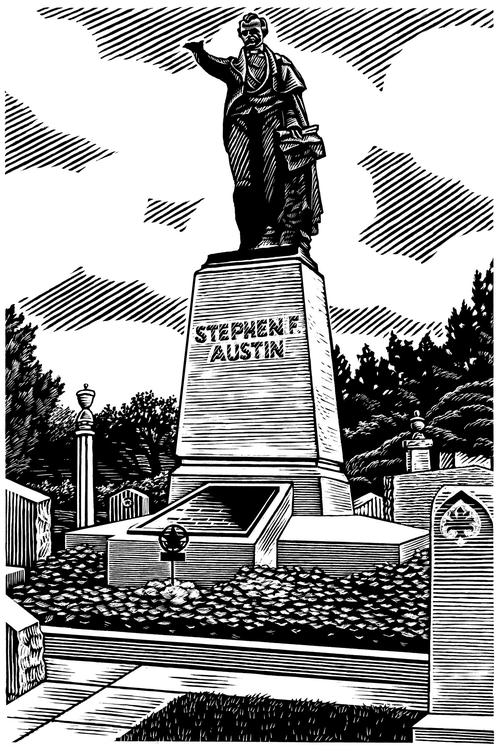God Save Texas: A Journey Into the Soul of the Lone Star State (39 page)
Read God Save Texas: A Journey Into the Soul of the Lone Star State Online
Authors: Lawrence Wright
Tags: #politics


Mexico has a long history. “The United States Government intends to build a high fence of nearly a thousand miles along the Rio Grande in Texas to keep the ‘wetbacks’ out, the Mexican workers,” Donald Judd wrote in 1992, in one of his fanciful rants.
It’s true that undocumented immigrants cross over in Big Bend; in 2016, the Border Patrol picked up 6,366 people who it believed had entered the country illegally in the park sector, and seized 16 pounds of cocaine along with nearly 42,000 pounds of marijuana. These are very small figures compared with those for other sectors along the border, but they are not negligible. When Roberta and I were choosing campsites, there were some at the very tip of the bend in the river that had been off-limits because of the illegal traffic across the border. They had suddenly become available because the authorities considered them safe, now that enforcement had become so much stronger, proving that there are ways of policing the border without defacing one of the most beautiful parts of the state.
When we came out of the water, we ran into Jesse Manciaz and Peter Owen, members of the Carrizo/Comecrudo tribe. Jesse had a medicine-man pouch and a necklace of bear claws around his neck. There was an eagle feather in his hatband, indicating his status as a warrior (he’s a Vietnam veteran). Peter wore a snappy little porkpie hat.
“We’re meeting people to talk about the wall,” Jesse told me, explaining that their tribe inhabited both sides of the river. They were used to crossing freely. Now they were threatened with partition. He said it was hard to get the message across. “People think there are no more Indians in Texas,” Jesse complained.
Peter suggested that was because Mexican Americans don’t know who they are. “They’re actually Indians.”
There were some ancient pictographs on the cliff face above us. It was a mystery how they got there. They were impossible to reach without twenty-foot ladders. West Texas is full of such inscrutable emblems. Some are thousands of years old; some of the more recent ones show the arrival of the conquistadors. You can sometimes make out buffalo and snakes and recognizable animals, but the ones we were looking at were symbols and enigmatic figures. Roberta thought she discerned an owl. “The owl has always been a messenger,” Jesse said. But through our field glasses we could see that there was some projection from the body of the creature. “Maybe a phallus,” Peter conjectured. “A lot of these were painted as puberty rituals.” He mentioned another pictograph just outside the park with a phallus that appears to enter a vagina when the light is right. “It’s life, you know.” I was thinking that teenagers have the same preoccupations no matter where they stand in history.
On the way back to the parking area, we ran into another birding couple. I mentioned to them the dilemma faced by the Indians who would be divided by the wall. “People think America is supposed to be some big open country and everybody can do as they please,” the husband said irritably. His wife added, “I don’t see what’s wrong with it as long as it’s on their side of the river.”
We drove to Del Rio and got in just after dark. Already, the stars had been erased from the sky. We went to dinner at Manuel’s Steakhouse. The Academy Awards were being broadcast on a giant TV. Then we went back to the Hampton Inn. It felt good to be in a bed again. In the morning, I turned over and reached for Roberta’s breast. I could feel her heart pulsing in my hand.

n the last week of July, Roberta and I, along with Steve and his wife, Sue Ellen, went over to the state cemetery to pick out our plots. It’s off East Seventh Street in Austin, in what used to be a blue-collar Latino neighborhood but has become increasingly upscale, with bars and restaurants giving the hipsters plenty of opportunity to contemplate their mortality.
Nearby is the grave of another explorer, the French sailor found in the wreck of the
La Belle,
the only remnant of the disastrous 1686 expedition of René-Robert Cavelier, Sieur de La Salle. The ship, with the sailor’s skeleton intact, had been hidden in the silt of Matagorda Bay for three hundred years when archaeologists discovered it, along with a pewter cup inscribed “C. Barange”—perhaps the sailor’s name. Among the war memorials is one to the “Nine Men of Praha,” in memory of the soldiers from a little Texas town who died in the Second World War, all the young men in that village.
On top of Republic Hill is a statue of Stephen F. Austin, the founder of Texas, who also brought slavery into the colony, dooming his creation to so much iniquity and turmoil. Clustered around Austin’s grave are assorted governors and politicians. George W. Bush will be the first president buried here, when his turn arrives, as well as Rick Perry and Dan Patrick. There’s Robert McAlpin Williamson, “Three Legged Willie,” who had a wooden leg but still managed to fight in the Battle of San Jacinto and later serve in the Republic’s congress. Dan Moody is here, the youngest governor in Texas history; he broke the back of the Ku Klux Klan, which was a dominant force in Texas in the 1920s. As attorney general, Moody also brought down the corrupt governor James E. Ferguson, and his wife, Miriam, who had succeeded him in office—our first woman governor. She made a place for herself in Texas lore when she campaigned against bilingual education, allegedly exclaiming, “If English was good enough for Jesus, it’s good enough for the schoolchildren of Texas.” In the indiscriminate society of the graveyard, Ma and Pa Ferguson lie almost head to heel with Dan Moody.
I accept that my life has already been lived. It has been a provincial life in many ways, intersecting only occasionally with history and the people who made it. I’ve always chosen to remain a step away from the center of the action, which for me would have been in the bustle of Manhattan or the corridors of power in Washington or the bungalows of Hollywood studios. They are all lives that beckoned to me. Each of them might have been more fulfilling than the one I chose. Instead, I’ve lived in a culture that is still raw, not fully formed, standing on the margins but also growing in influence, dangerous and magnificent in its potential. I have been close enough to those beguiling alternative lives to drink in the perfume of temptation. And yet, some maybe cowardly instinct whispered to me that if I accepted the offer to live elsewhere, I would be someone other than myself. My life might have been larger, but it would have been counterfeit.
I would not be home.
There are friends already here. Bud Shrake, a writer we all loved, lies next to his girlfriend, Ann Richards, the former governor. Ann’s epitaph quotes from her inaugural address in 1991: “Today we have a vision of Texas where opportunity knows no race, no gender, no color—a glimpse of what can happen in government if we simply open the doors and let the people in.” Bud’s epitaph reads, “So Far, So Bueno.”
We rode down the path, past the white headstone of former Texas legislator Bill Kugle, who wanted all eternity to know “He never voted for Republicans and had little to do with them.” The black granite monument of Barbara Jordan, the first African American Texan elected to the U.S. House of Representatives, simply says, “Patriot.” At the bottom of the hill, in stark, orderly rows, are the graves of two thousand Confederate soldiers. Above them, on a shady hillside, is the memorial to their commanding officer, Albert Sidney Johnston, a hero of the Texas Revolution and one of the greatest Confederate generals, who fell at Shiloh.
There was a spot near Johnston where we lingered. One could still see Stephen F. Austin on the top of the slope, with his hand reaching out in our direction. I felt a little light-headed. We all came to agreement rather quickly.
I had made my choice.
Texas Monthly
and
The New York Times,
has been a wise and buoyant counselor, not only for this project but throughout my career. She was an invaluable guide to her adopted city of Houston. Robert Bryce, an author and senior fellow at the Manhattan Institute, gave me useful guidance on the oil and gas industry. Robert Wilonsky, a city columnist for
The Dallas Morning News,
reacquainted me with my old hometown. Mónica Ortiz Uribe, a freelance radio reporter, shared her two cities—El Paso and Juárez—with me. Historian Lonn Taylor gave me a useful overview of West Texas. Manny Fernandez, Houston bureau chief for
The New York Times,
graciously hosted me in the midst of deadlines brought on by Hurricane Harvey. And of course my friend Stephen Harrigan is a resource I have been calling upon for nearly forty years.
Texas Monthly,
and historian H. W. “Bill” Brands.
In 2009, a new publication started in Texas, one that has done more than any other organization to inform citizens about the politics of our state. John Thornton, a venture capitalist in Austin, along with Evan Smith, then the editor in chief of
Texas Monthly,
and Ross Ramsey, then the editor and owner of
Texas Weekly,
joined forces to create an all-digital platform called
The Texas Tribune.
I don’t know of any other state that has the depth of political coverage that the
Tribune
has been able to supply in Texas. Certainly, no other state needs it more.
David Danz’s illustrations wonderfully capture the diversity and spirit of Texas.
Once again, Jan McInroy cast her scrupulous eye over the copy. When I get a manuscript back from her, I’m always a little abashed at the mob of errors that she has rounded up and placed under grammatical arrest. I am also grateful to my fact-checkers. At
The New Yorker,
Tammy Kim, Fergus McIntosh, and Rozina Ali checked the article “America’s Future Is Texas” (July 10 and 17, 2017) that gave rise to the current book. David Kortova and Elizabeth Barber checked “A Tale of Three Wells,” which was published in the January 1, 2018,
New Yorker
as “The Glut Economy.” Emily Gogolak, a
New Yorker
–trained checker, moved to Austin in time to examine the rest of the manuscript. Welcome to Texas, Emily.
Some of the other work in this book, mainly in the chapter “Culture, Explained,” appeared in
Texas Monthly
(“Remembrance of Things Primitive,” February 1993).
I am enviably supplied with extraordinary professional support: Ann Close, my longtime editor at Knopf; Andrew Wylie, the world’s best agent; and Daniel Zalewski, who has been my editor and supporter at
The New Yorker
for many years, and I hope for many more. It was the editor of that wonderful magazine, David Remnick, who asked me to “explain Texas”—I think because he couldn’t understand why I live here. I hope this book answers the question.
